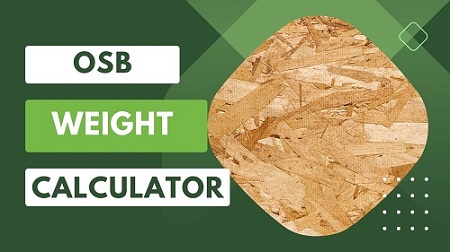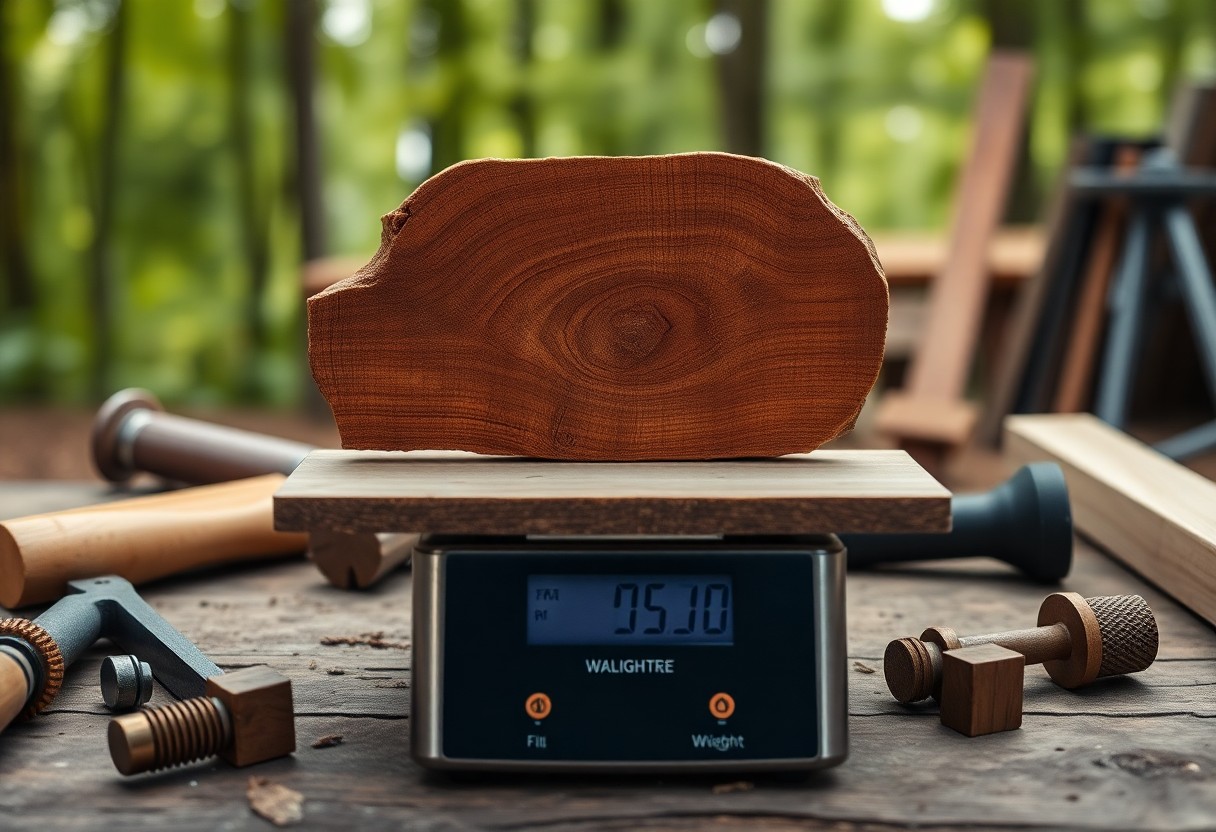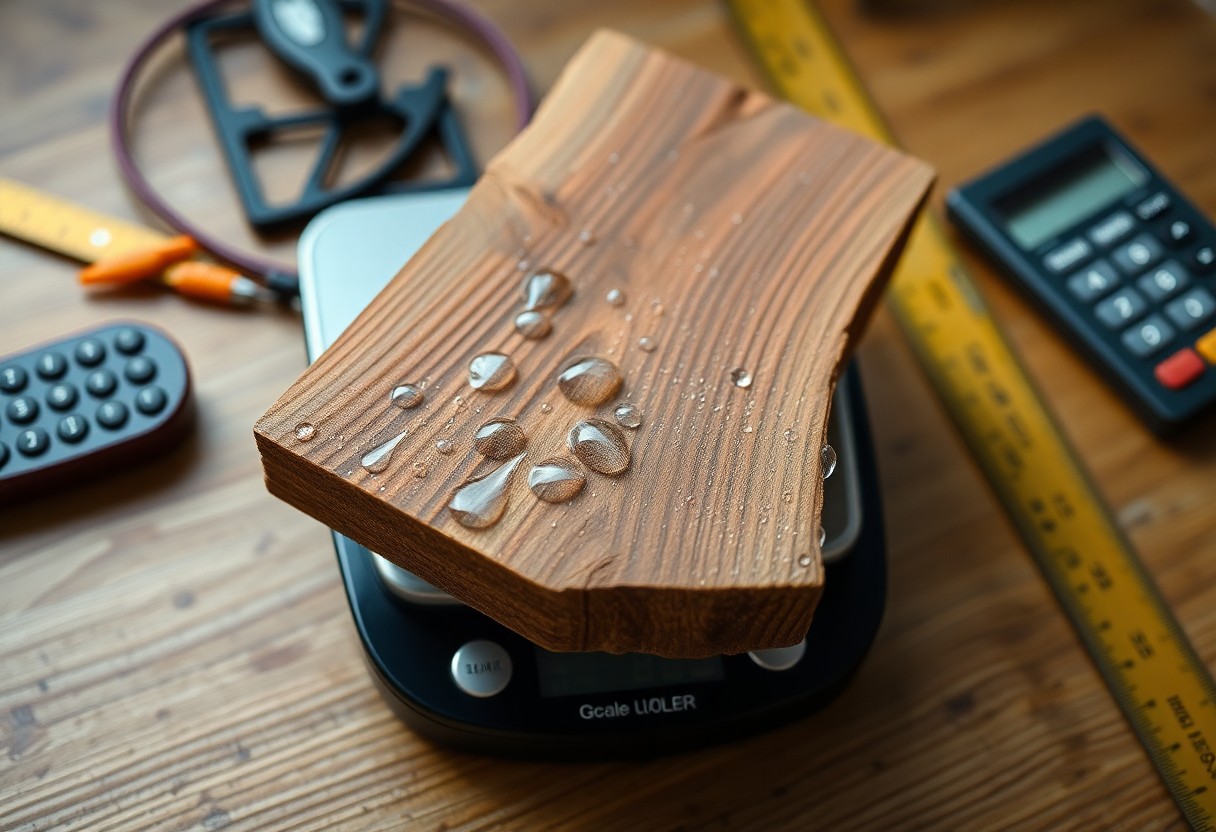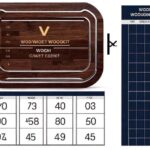Just when you need to determine the weight of your MDF wood for a project, the MDF Wood Weight Calculator comes to the rescue.
This tool allows you to easily calculate the weight based on your specific dimensions and density, ensuring that you have accurate figures for transport, handling, and project planning.
By understanding the weight of your MDF boards, you can make informed decisions that directly impact your workflow and overall success. Let’s explore how this calculator works and the benefits it offers for your woodworking projects.
What is MDF Wood?

A type of engineered wood, MDF (Medium-Density Fiberboard) has become a popular choice among woodworkers and DIY enthusiasts alike. But before you start calculating its weight, it’s imperative to understand what MDF wood is and its characteristics.
Definition and Composition
Against the backdrop of traditional wood, MDF wood stands out for its unique composition. Made from wood fibers, wax, and resin, MDF is pressed together to form a dense, flat panel.
The fibers are typically derived from softwood trees, such as pine or spruce, and are then broken down into a pulp before being formed into a board.
Advantages and Uses
Woodworking projects often call for a material that’s both durable and affordable, which is where MDF wood shines. Its smooth surface and lack of knots make it an ideal choice for painting and finishing, while its density provides stability and resistance to warping.
To take full advantage of MDF wood’s benefits, you’ll want to consider its uses in your project. Whether you’re building furniture, creating decorative panels, or even crafting intricate designs, MDF’s versatility makes it an excellent option. Its affordability also means you can experiment with different designs and techniques without breaking the bank.
MDF Wood Weight Calculator
A medium-density fiberboard (MDF) is a versatile engineered wood product made from wood fibers, wax, and resin. Known for its smooth surface and uniform density, MDF is commonly used in furniture, cabinetry, and decorative moldings. Its lack of knots or grain produces a flawless finish, making it a preferable choice for applications requiring paint or veneer. As you explore MDF, you’ll appreciate its affordability and adaptability in various woodworking projects.
Definition of MDF Wood
About MDF wood, or medium-density fiberboard, is an engineered product formed by compressing wood fibers under heat and pressure. This process results in a dense, flat board that boasts numerous advantages for woodworking and construction tasks. Its consistency makes it an ideal choice for projects where uniformity is necessary.
Properties of MDF
Around MDF wood features several noteworthy properties that make it suitable for a wide range of applications. Its smooth surface allows for easy painting and finishing, while its uniform density ensures consistent performance during cutting and shaping. Additionally, MDF is less prone to warping compared to solid wood, which adds to its appeal in various projects.
But, as beneficial as MDF can be, it’s important to consider its drawbacks. MDF can be susceptible to moisture damage, and when cut, it can release fine dust particles. Therefore, while it is an excellent choice for many projects due to its workability and cost-effectiveness, you should always handle it with care and use appropriate dust protection while working. Furthermore, consider applying a sealant or using it in dry environments to prolong its lifespan in your applications.
Why Weight Matters in Woodworking
Among the various factors that affect the success of your woodworking projects, weight is a critical consideration. Your MDF wood’s weight determines the type of joints, fasteners, and supports needed to hold your structure together.
By accurately calculating the weight, you can choose the right materials and design elements to ensure your project’s stability and longevity.
Consequences of Inaccurate Calculations
Importance of accuracy cannot be overstated when it comes to weight calculation in woodworking. Inaccurate calculations can lead to a range of problems, from compromised structural integrity to safety risks.
Calculations that are off by even a small margin can result in weakened joints, collapsing shelves, or even accidents. For instance, if you’re building a bookcase, inaccurate weight calculations can cause it to topple over, damaging surrounding property and potentially harming people nearby.
By using a reliable MDF wood weight calculator, you can avoid these costly and potentially dangerous mistakes, ensuring your projects are both safe and successful.
Importance of Weight Calculation
While working with MDF wood, it’s necessary to calculate its weight accurately to ensure your projects turn out as planned.
Inaccurate weight calculations can lead to a range of issues, from structural instability to safety hazards. By using a reliable MDF wood weight calculator, you can avoid costly mistakes and ensure your creations are both functional and aesthetically pleasing.
Applications of MDF
Among the various applications, MDF is widely used in furniture making, cabinetry, and decorative moldings. Its smooth surface makes it an excellent choice for painting and veneering, while its enablement for intricate designs allows you to create custom pieces that suit your style. Its versatility extends to crafting musical instruments and even staging for events, proving its adaptability across multiple industries.
Advantages of Knowing MDF Weight
Weight calculation assists you in determining the structural integrity and safety of your projects. By understanding how much MDF weighs, you can tailor your design and choose the right supports, such as brackets or legs, to ensure stability. Accurate weight data also allows you to optimize your materials for transportation, reducing risks associated with moving heavy items.
Indeed, knowing the weight of MDF not only enhances your project’s safety but also improves efficiency. It enables you to plan your woodworking tasks with a clear understanding of load capacities, minimizing the chances of unexpected difficulties during assembly. This insight can save you time, effort, and resources, allowing you to focus on creating high-quality, aesthetically appealing pieces that meet your specifications.
MDF Density Factors
Any variations in MDF density can significantly impact the overall weight of the material you are working with. Several factors contribute to these density variations, including:
- Manufacturing processes
- Wood fiber quality
- Additives used
- Moisture content
- Thickness and size of the board
Knowing these factors will help you make more informed decisions regarding the MDF that best meets your needs.
Various Densities of MDF
After understanding MDF, it’s important to note that it comes in various densities tailored for specific applications. Standard MDF typically ranges from light to medium density, while high-density MDF is available for sturdier construction needs.
How Density Affects Weight
The density of MDF directly correlates to its weight. A higher density means more material is packed into the same volume, resulting in a heavier board.
Understanding how density impacts weight is vital when selecting MDF for your projects. The weight can affect handling, transportation, and installation processes. Knowing the difference between light, medium, and high-density MDF will enable you to choose the right product for your specific application, allowing for ease of use without compromising structural integrity or performance.
MDF Weight Calculation Formula
Despite its widespread use, understanding how to calculate the weight of MDF wood is imperative for your projects. The formula for MDF weight involves multiplying the volume of the sheet by the density of the material. Generally, the density of MDF ranges from 600 to 800 kg/m³, which you can use in combination with the thickness, width, and length of your MDF sheet to estimate the overall weight accurately.
Basic Calculation Method
Against the backdrop of its various applications, you can simplify the weight calculation by using the formula: Weight = Length x Width x Thickness x Density. By inputting the dimensions of your MDF sheet into this formula and choosing the appropriate density, you can effortlessly determine the weight.
Example Calculation
Weight calculation for MDF becomes tangible when you see numbers in action. If you have a sheet of MDF that measures 2 meters long, 1.2 meters wide, and 19mm thick, with a density of 700 kg/m³, your calculated weight would give you a clear benchmark for your needs.
Calculation begins with converting all measurements to meters, yielding a volume of 0.0024 m³ (2 x 1.2 x 0.019). Multiplying this volume by the chosen density of 700 kg/m³ results in a weight of approximately 1.68 kg. This straightforward approach allows you to effectively plan for transportation and assembly, ensuring you have the right materials on hand for your project.
Tools for MDF Weight Calculation
Many methods are available for calculating the weight of MDF wood, enabling you to choose the one that suits your needs. From online calculators to mobile apps, you can easily make accurate calculations that assist with your woodworking projects and ensure you have the right materials for each task.
Online Calculators
For quick and convenient weight calculations, online calculators are a fantastic option. These tools typically require you to input dimensions and density, providing instant results that can help you determine the weight of your MDF sheet with ease.
Mobile Apps
Tools such as dedicated mobile apps can significantly enhance your MDF weight calculation experience. They allow you to access weight data on-the-go, making it easy to calculate weights anytime and anywhere, whether you’re at home or in a store.
And many of these apps come equipped with additional features, such as material density tables, allowing you to understand the different properties of MDF and other wood types. With user-friendly interfaces and quick access to calculations, these mobile apps ensure you have the necessary resources right at your fingertips, making your projects more efficient and organized.
Benefits of Calculator Usage
Around every corner, you’ll find benefits to using an MDF wood weight calculator. From saving time to reducing errors, these calculators are an invaluable resource for any DIY enthusiast or woodworking professional.
Usage of an MDF wood weight calculator can also help you optimize your project’s design and materials. By knowing the exact weight of your MDF wood, you can make informed decisions about the structural integrity of your project, ensuring that it’s both safe and functional. You’ll be able to plan ahead, avoiding costly mistakes and unnecessary delays.
Practical Tips for MDF Weight Management
After determining the weight of your MDF projects, effective weight management becomes crucial to avoid any mishaps. Here are some practical tips:
- Utilize lightweight alternatives when possible.
- Distribute the weight evenly when lifting or moving MDF.
- Use appropriate tools like dollies or lifts to assist in transportation.
- Plan your workspace to minimize unnecessary moves and shifts.
Knowing these techniques will help you handle MDF safely and efficiently.
Handling and Transporting MDF
The key to successfully handling and transporting MDF is to treat it with care. Always lift MDF sheet products with at least two people, distributing the load properly. Avoid dragging the material on rough surfaces to prevent damage. Using pallet jacks or carts can significantly ease the transporting process, making it safer for you and preserving the integrity of the MDF.
Storage Considerations
Considerations must be made when storing MDF to maintain its quality over time. Keep your MDF sheets in a dry, climate-controlled area to prevent moisture absorption, which can lead to warping.
With the right storage conditions, such as stacking MDF sheets horizontally on a flat, supportive surface, you can prevent bending. Additionally, ensure they are protected from direct sunlight and extreme temperature fluctuations to maintain their structural integrity. Effective storage will extend the lifespan of your MDF and enhance your overall project quality.
Measurement Best Practices
Calculations are only as good as the measurements you input, so make sure to measure your MDF wood carefully and accurately.
Use a high-quality tape measure or caliper to get precise readings, and take note of any irregularities in the wood’s shape or size.
Common Mistakes to Avoid
Any small mistake in your calculations can lead to big problems down the line, so be aware of common pitfalls like incorrect unit conversions or miscalculating the volume of your MDF wood.
With so many factors to consider, it’s easy to get overwhelmed and make a mistake. That’s why it’s vital to take your time, double-check your work, and consult the calculator’s instructions if you’re unsure about anything. By being mindful of these common mistakes, you can ensure that your project turns out exactly as planned.
Conclusion
Taking this into account, using an MDF wood weight calculator can significantly enhance your project planning by providing you with accurate weight estimates for your materials. You can ensure that your designs are feasible and that your structural integrity is maintained. By integrating these calculations into your workflow, you can make informed decisions regarding handling, transportation, and overall project management, ultimately leading to a more efficient and successful woodworking experience.








